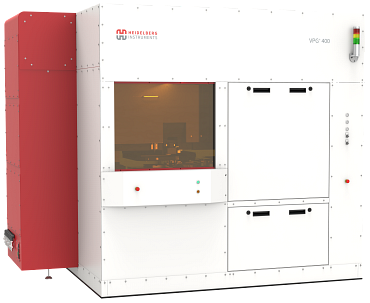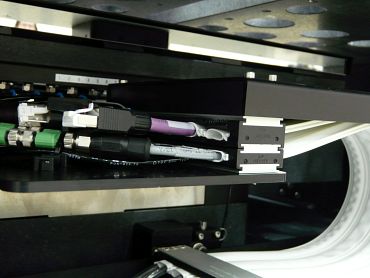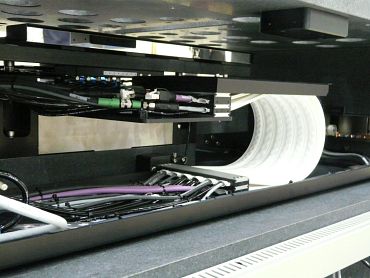User report
Cables for the cleanroom, with over 31 million cycles a year
Energy supply system for particle-free semiconductor production
Volume Pattern Generator systems are used by Heidelberg Industries in industrial mass production. These systems are used to write microstructures directly onto wafers. Despite the continuous operation of the system, the energy supply must run absolutely smoothly - and all of this in a cleanroom. The solution to this was the e-skin flat. In contrast to conventional chains, cables are guided in so-called pods.Profile
- What was needed: Ribbon cable e-skin flat
- Requirements: High precision, short cycle times and reliability in continuous operation
- Industry: Semiconductor production
- Success for the customer: The application has proven itself for a year with cycle times of around one second and thus more than 31 million cycles a year

Problem
Volume Pattern Generator systems, VPG for short, from Heidelberg Instruments are mainly used in industrial mass production. Using a UV laser, they produce photomasks with high precision and speed, which serve as templates for the production of microchips, sensors, LEDs and MEMS (micro-electro-mechanical systems). Another possible application of the VPG systems is the direct writing of microstructures on wafers.In addition to extremely high precision, 24/7 operation and very short cycle times every second are part of the requirement profile for the drives in the systems. Michael Kappel, Head of Electrical Design: "That's why we develop many core components, including air-cushioned XY tables, in-house." Since the exposure process takes place under cleanroom conditions, the drive components must be selected accordingly. This applies in particular to the energy, signal and media supply to the XY tables. Even the smallest grains of dust impair the quality of the exposure. Another requirement is at least as important. Kappel: "Even the slightest unrest in the course of the energy supply must be avoided, as it reduces the precision of the exposure."
Solution
During this development project, igus presented the e-skin flat: a new energy supply concept that dispenses with the previously used chains. Instead, the cables and hoses are guided in flat profiles - so-called pods - which can be easily opened and closed individually if necessary. This compact system allows very small bend radii and is resistant to wear and abrasion during movement, also because there are no chain links that touch each other. It can therefore be used in cleanrooms, even in multiple layers, as tests by the Fraunhofer IPA confirm. The new product came at the right time: the designers in Heidelberg built a demonstrator for long-term tests with the new energy supply, which has meanwhile completed 120 million cycles with ISO 1 in the igus test laboratory. The cable passed the test to the complete satisfaction of the user. igus did the final adjustment work on the fastening elements - and the new energy supply for the "small" VPG and ULTRA systems was completeThis solution has now been in use for a good year and has proven itself in practice, even in very dynamic applications with cycle times of around one second - that's more than 31 million cycles a year. Heidelberg Instruments uses high-quality igus chainflex cables with a low-abrasion TPE jacket.
Ribbon cable e-skin® flat for the cleanroom


